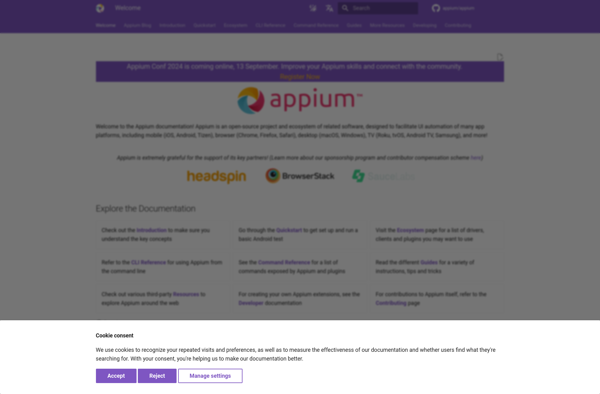Description: Appium is an open source test automation framework for mobile apps. It allows you to automate tests on native, hybrid and mobile web apps for iOS and Android using Selenium WebDriver API.
Type: Open Source Test Automation Framework
Founded: 2011
Primary Use: Mobile app testing automation
Supported Platforms: iOS, Android, Windows
Description: Sikuli is an open source graphical user interface (GUI) automation and testing tool. It can identify and control GUI components by matching images of them, enabling test automation without needing access to the application's source code.
Type: Cloud-based Test Automation Platform
Founded: 2015
Primary Use: Web, mobile, and API testing
Supported Platforms: Web, iOS, Android, API

